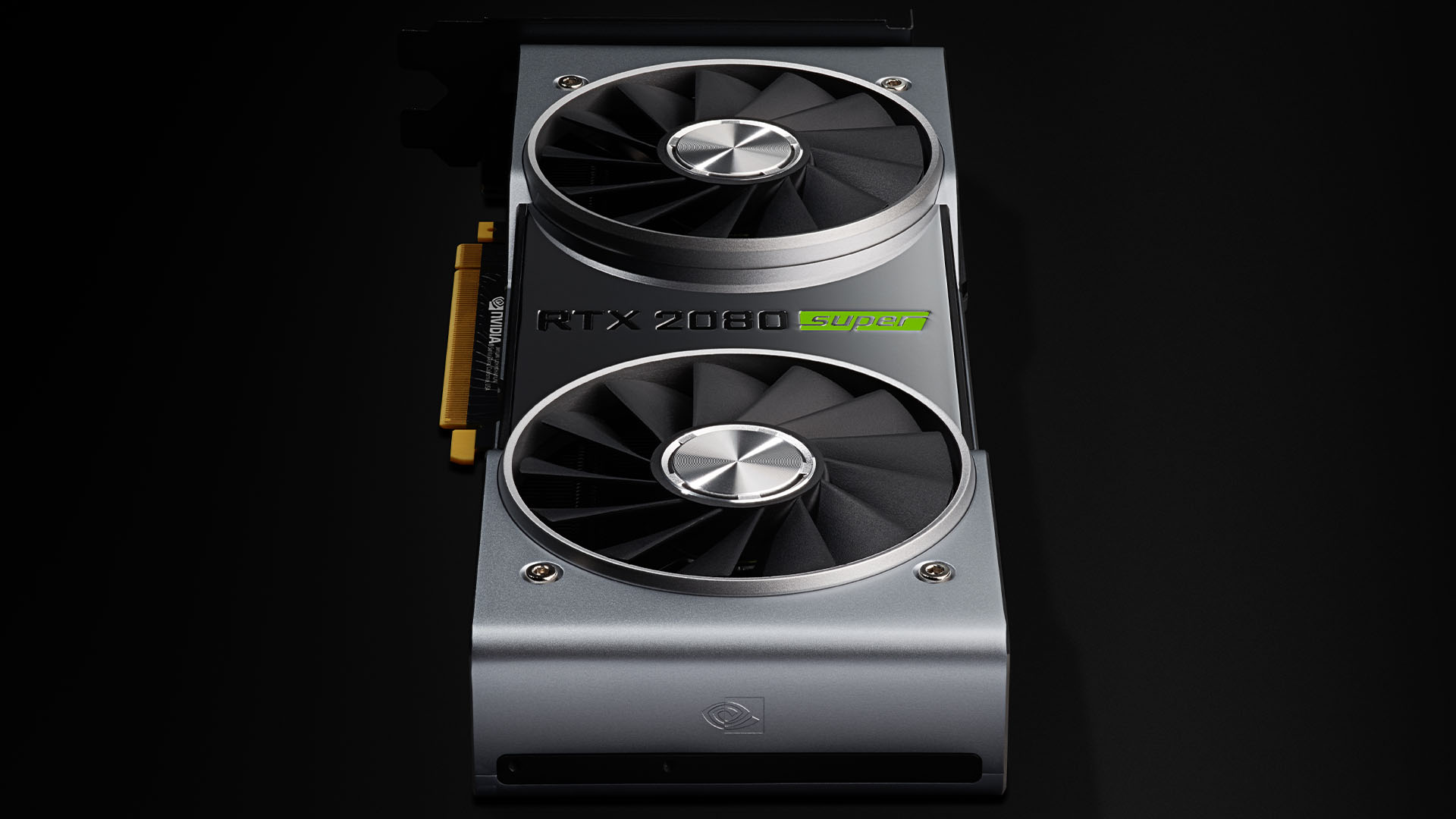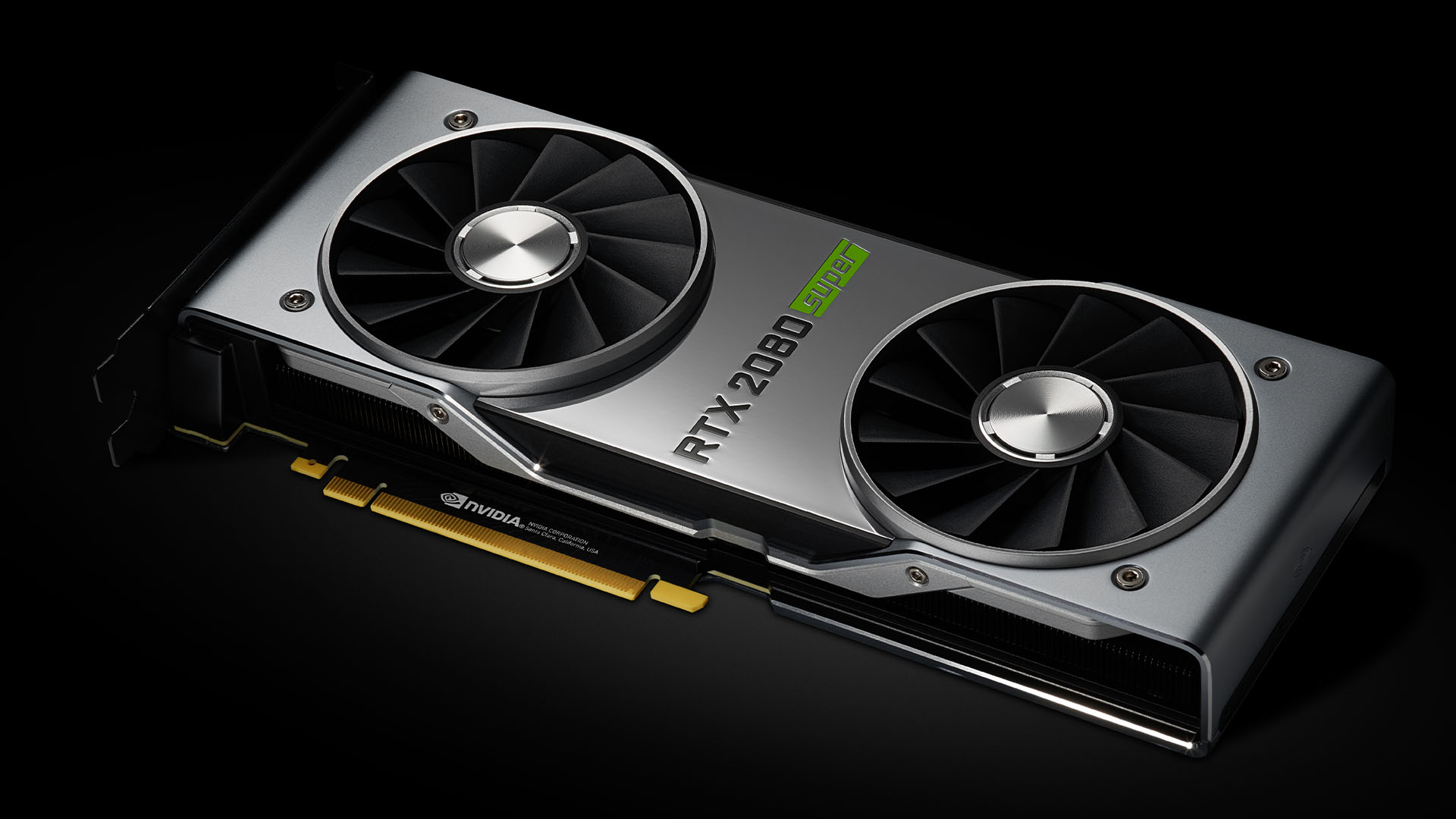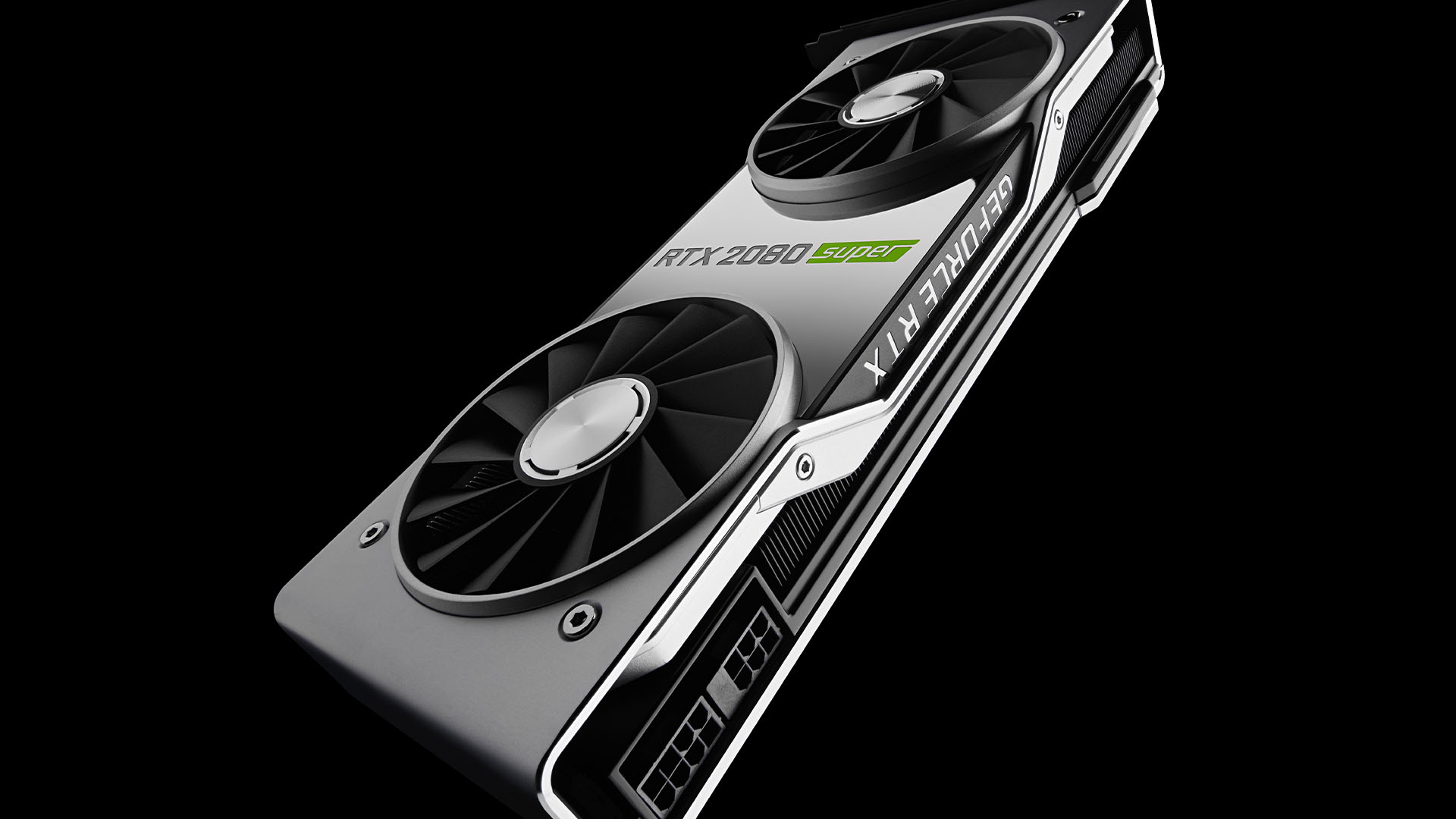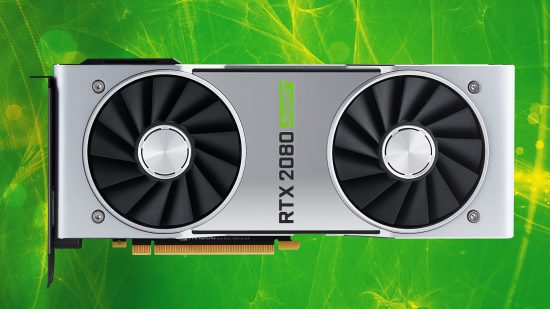Our Verdict
74%Faster than the original RTX 2080, but not by much, and too expensive for the performance on offer.
Despite being unequivocally the fastest GPU on this side of a grand, it’s hard to get excited by the Nvidia GeForce RTX 2080 Super. Nvidia’s other Super GPUs have offered a substantial jump in specs and performance over their predecessors, with the RTX 2070 Super moving to the TU104 core and offering 256 more stream processors, and the RTX 2060 Super getting 2GB more memory, a wider memory interface and 256 more stream processors.
Comparatively, the difference between the RTX 2080 and its Super variant is disappointingly small. It finally sees the TU104 GPU fully enabled, with all 48 of its streaming multiprocessors (SMs) working to give you 3,072 stream processors. That’s fine, but the original RTX 2080 already had 46 of them enabled, so you only get 128 more stream processors with the Super card. In terms of core specs, it’s a pretty minimal upgrade.
Clock frequencies have been increased, though. Most notably, the memory now runs at 15.5GHz (effective), rather than the 14GHz frequencies seen throughout the rest of the sub-£1,000 RTX range. The GPU boost clock has also been upped to 1815MHz, which is 105MHz higher than a stock-speed RTX 2080, although Nvidia’s Founders Edition boosted to 1800MHz, so it’s not much of an upgrade in terms of Nvidia’s own cards.

The base clock has also been increased from 1515MHz to 1650MHz. In real gaming, we usually see Nvidia cards go well beyond the stated boost clock, though, and that’s no exception with the RTX 2080 Super, which was regularly boosting between 1935MHz and 1965MHz in our game tests.
This time round, the Founders Edition cards aren’t overclocked, but you can buy third-party cards with higher clock speeds. At the moment, Nvidia’s Founders Edition 2080 Super cards are also sold out, which means you’ll need to look at third party designs anyway. They currently start at £699 inc VAT for a Zotac card on scan.co.uk

The minimal improvement in specs also means there’s very little difference between the RTX 2080 Super and the original RTX 2080 Founders Edition cards, other than the new ‘Super’ branding. The new RTX 2080 Super still has the same 6-pin and 8-pin PCI-E power connectors, two fans, a chunky backplate and a neat dual-slot form factor. There’s no RGB lighting, but the traditional Nvidia green lighting shines through the product name on the edge. It’s a solid, quiet cooler with a great design – it’s a shame it’s already so hard to find these cards.

Nvidia GeForce RTX 2080 Super performance
As we expected from the minimal specs upgrade, there isn’t a huge leap between the original RTX 2080 Founders Edition and the RTX 2080 Super, but there’s definitely a difference. You don’t always see much benefit at 1080p (in fact, the original card is sometimes slightly quicker at this resolution), but at 2,560 x 1,440 the Super pulls away, with superb frame rates in all our test titles. Significantly, it enables you to play Battlefield V at 2,560 x 1,440 with High DXR and DLSS enabled without dropping below 60fps.
It even manages a minimum of 39fps at 4K with these settings. However, our Battlefield V benchmark is based on a single-player, repeatable play-through, without much combat – that figure is likely to drop in a large scale multiplayer game when the action heats up – you still really need an RTX 2080 Ti to enable ray tracing at 4K.
Some of our other test titles were playable at 4K on the RTX 2080 Super, though. Battlefield V stays above 60fps in DirectX 11 mode (without ray tracing), and our other games’ minimum frame rates were either in the high 30s or low 40s. It’s not hugely faster than the original RTX 2080 here, but it generally adds 2-3fps to the minimum.
The downside to the extra hardware and increased clock speeds, however, is an increase in power draw. Our system drew 343W form the mains with the 2080 Super installed – just 11W less than the RTX 2080 Ti.
Nvidia GeForce RTX 3080 pros and cons
Pros
- Great cooler
- Fastest GPU under a grand
- Ray tracing looks great
Cons
- Barely faster than RTX 2080
- Very expensive
- Still struggles with 4K ray tracing
Nvidia GeForce RTX 2080 Super specs
The Nvidia GeForce RTX 2080 Super specs list is:
| Stream processors / CUDA cores | 3,072 |
| RT cores | 48 (1st-gen) |
| Tensor cores | 394 (1st-gen) |
| Base clock | 1650 MHz |
| Max boost clock | 1815 MHz |
| Memory | 8GB GDDR6 |
| Memory clock | 15.5GHz effective |
| Memory bandwidth | 496GB/s |
| Memory interface | 256-bit |
| Card interface | 16x PCIe 2 |
| Power connectors | 1 x 8-pin, 1 x 6-pin |
Nvidia GeForce RTX 2080 Super price
Price: Expect to pay $699 (£669).
The RTX 2080 Super is undoubtedly a fast GPU, but it’s also expensive. With the Founders Edition sold out, you’re looking at paying at lest £699 for a basic third party card, with prices for some cards going up to the £850 mark.
Scored on basis that it costs a lot more than RTX 2070 Super (£475 for Founders Edition). Comparatively, original RTX 2080 cards are now going for £599 on amazon.co.uk, and they’re only slightly slower. Perhaps more importantly, the RTX 2070 Super isn’t much slower either, playing all our test games at 2,560 x 1,440 without dropping below 60fps, and still producing a capable minimum of 56fps at this resolution with High ray tracing enabled in Battlefield V.
The RTX 2080 Super is faster at 4K too, but not by enough to make games smoothly playable – you need the RTX 2080 Ti for that really. All of which puts the RTX 2080 Super in a bit of a limbo. The RTX 2070 Super is already really fast for 2,560 x 1,440 gaming, and costs nearly £200 less than the RTX 2080 Super, and the latter doesn’t offer enough power to properly push into 4K gaming, or to make it worth paying the large amount of extra money.
It’s good to see the TU104 finally fully enabled, but the small benefit it brings makes the extra cost of the RTX 2080 Super very hard to justify. Arguably, Nvidia would have been better off basing this card on a cutdown TU102 GPU, as used in the RTX 2080 Ti, for this money. If you want the fastest card available without spending the colossal sums demanded by the RTX 2080 Ti, then the 2080 Super is the card to buy, but it’s not much of a step up from significantly cheaper cards.
